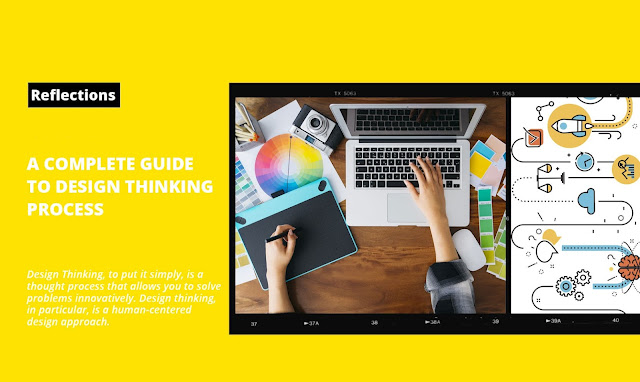A Complete Guide to Design Thinking Process
Maybe one of your coworkers did an online course on it, or you've just heard the phrase thrown about so much that it feels like a concept you'll never really comprehend. Simply put, the design thinking process is a human-centered method of problem-solving that has gained a lot of traction in recent years on online platforms and elsewhere.
Even though design thinking has become increasingly popular these past few years, the notion itself has been around for years. And, as is often the case, the more famous it became, the more it was used out of sense, causing even more ambiguity.
Top Five Steps of the Design Thinking Process
Design Thinking, to put it simply, is a thought process that allows you to solve problems innovatively. Design thinking, in particular, is a human-centered design approach. It aids teams in finding the delicate balance between what makes meaning to end-users, what is technologically possible, and what is commercially viable.
Design Thinking further gets regarded as a process of encouraging organizations to focus on the individuals they're going to create for, resulting in better products, facilities, internal systems, and feedback from the users.
Mentioned below are five steps of an effective design thinking process.
Empathize
Even though design thinking is a non-linear process, most projects start with the empathizing phase. This is because empathy for end users is at the heart of the creative thinking mentality.The principal goal of this phase is to get a thorough understanding of the participants for whom you are designing. What motivates them, what causes them to be troubled? What do they do during the day?
Define
The second phase of the design thinking process includes identifying the problem statement that you attempt to fix for the user. When polished diversions compete for your focus, outlining a problem is like locating a North Star in the sky, it directs your choices and helps to keep you on track.The Define stage develops on the findings you made about your customers in the 'Empathizing' level, synthesizing the discoveries of your analysis to identify the most valuable design competition to tackle.
Ideate
This process aims to trigger ideas rather than to come up with a ready-to-use and refined solution. Don't be concerned about the feasibility or usefulness for the time being. Many of the suggestions that your team generates will have to be rejected, which is perfectly fine. For the ideation phase to become productive, your team should feel comfortable while challenging the universally believed opinions and notions in the people's minds.
Prototype
In this step, you obtain an uncomplicated and comfortable means of evaluating your ideas in the real world by developing a prototype. It is crucial to keep prototypes simple, and the goal of this stage is to make intelligent design choices. Also, try to keep in mind that both validating ideas and refuting them are equally important.
Test
The testing step is the simplest of the five steps. Here you provide the prototype to real people, let them try it, and collect their comments. Following the testing step, you will know which elements of your product your customers prefer and which they'd rather ignore.
Testing provides teams with a firm foundation as well as information for revision and improvement. But, in the end, it discloses the product's viability and allows teams to save both time and expenses.
Design thinking can get applied to every aspect of a business. If you are looking for specific design thinking courses to take your career in design to a whole new level, you should undoubtedly join MIT ID Innovation. We are a top educational institute in India in design and innovation and always attempt to help you learn and grow every single day.


.jpg)
Comments
Post a Comment